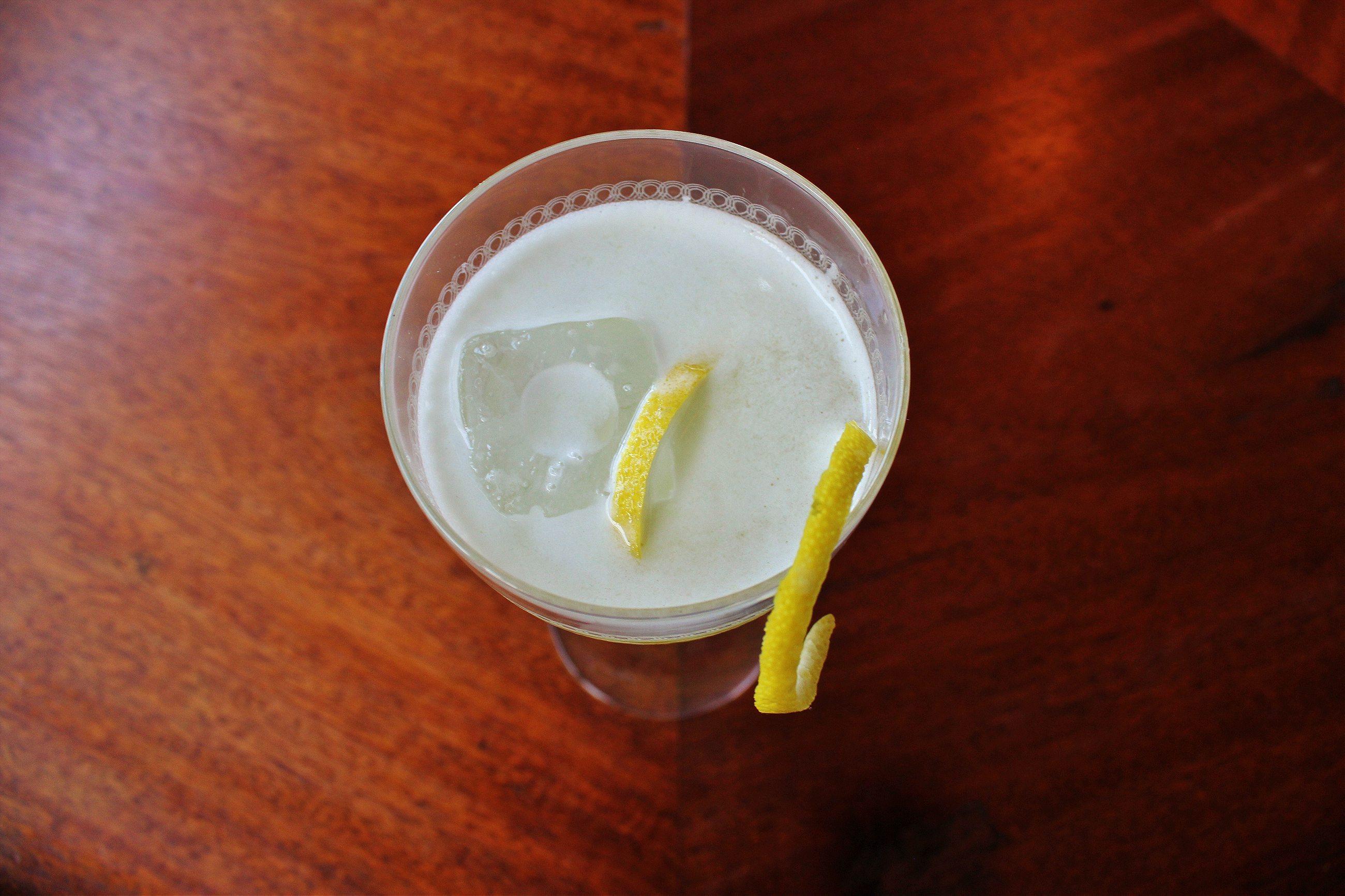Pisco Punch, the drink that defined boozy, brothel-studded Gold Rush San Francisco, has been reborn in the city that is gilded once again.
Every good drink has a story. Absinthe was the mind-altering elixir of Paris bohemians at the turn of the 20th century. The gin martini helped the post-war office man in the grey flannel suit take the edge off. And The Mai Tai was all Elvis in Blue Hawaii. But few alcoholic concoctions have a narrative as colorful as the Pisco Punch, the official drink of boozy, brothel-studded, Gold Rush San Francisco. Part cocktail, part legend, it’s a piece of pre-Prohibition lore—one now enjoying a resurgence across the Bay Area.
The story starts in South America. In the early 19th century, trading vessels making pit stops in Peru often picked up a load of pisco, the distilled grape brandy that served as the regional hooch, dropping it off at some other point along the Pacific. As a result, San Francisco was lousy with the stuff. And by the late 1800s, enterprising barkeeps had come up with some pretty ingenious ways of presenting this firewater. Foremost among them: Duncan Nicol, the sturdy Scottish proprietor of the legendary Parker’s Bank Exchange Saloon, a high-class joint on Montgomery Street that didn’t tolerate paintings of nudes or clients who’d consumed more than two drinks.
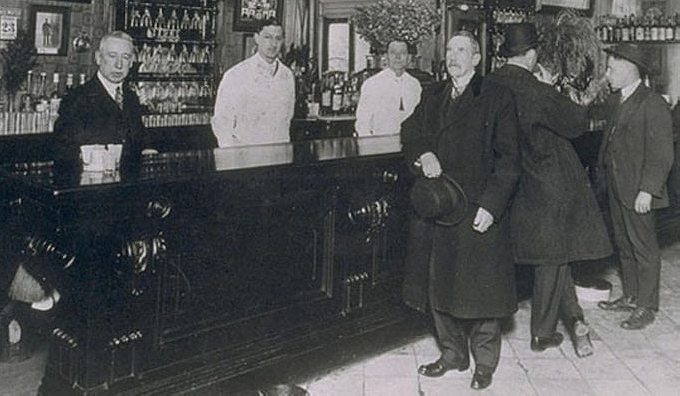
It was here, in the waning days of the 19th century, that Nicol popularized a pineapple-pisco cocktail that he dubbed the “Pisco Punch.” Unfortunately, the drink’s exact ingredients and proportions remain something of a mystery; Nicol was so protective of his formula he often made the drink out of sight. It definitely contained pisco and pineapple in some form, either as a juice or syrup. But its other ingredients are pure guess work. Over the decades, the drink has reportedly been laced with powdered sugar, grenadine, grape juice, frozen limeade, Curaçao, honey, egg whites, Herbsaint, bitters, nutmeg, Absinthe, and cocaine (the plant alkaloid, not the mountain of processed powder inhaled by Tony Montana). Whatever it was, the result was a demure sweet-tart mix of fruit gussying up pisco’s gruff barroom wallop. As one writer of the era noted: “It was like lemonade, but came back with the kick of a roped steer.”
A rival bar hired a chemist to try to divine the formula
For a glorious moment, the cocktail defined San Francisco. The Bank Exchange was often the first stop for many visitors to the city. A rival bar hired a chemist to try to divine the formula. And the drink inspired an avalanche of purple prose. The Los Angeles Times described it as “a febrifuge of rare and mystical ingredients.” And Rudyard Kipling theorized it was made “of the shavings of cherubs’ wings, the glory of the tropical dawn, the red clouds of sunset.”
The phenomenon, however, was short-lived. Prohibition, starting in 1920, put an end to the Bank Exchange. Six years later, Nicol died—and, according to his obituaries, took his recipe to the grave. But the current hipster craze for all things pre-Prohibition—from twirly mustaches to pickled everything—has resuscitated the drink in San Francisco. The modern-day version consists principally of pisco, lime juice, and pineapple gum arabic, the latter of which gives the cocktail its body. But since the original recipe remains a mystery, there’s plenty of room for improvisation—which means every bar prepares it just a little differently.
Here are five of the best:
Pisco Latin Lounge
James Schenk, the Peruvian-American owner of this pan-Latin spot, says that to understand the cocktail’s original allure, drinkers need to imagine how extraordinary it must have seemed in the late 19th century. “Back in those days, you couldn’t just go to the supermarket to buy a pineapple,” he says. “It was an incredibly exotic fruit.” At the Lounge, it’s definitely the pineapple that steals the day. Fresh pieces are soaked in Barsol pisco for a week and each drink is topped with a heavily macerated cube on a bamboo spear. When eaten on an empty stomach, it provides a delirious rush of sugar and alcohol. Eat two and you’ll know what Kipling meant when he babbled about cherubs’ wings.
Incidentally, this is a place that takes its history quite seriously. Self-described “cocktail historian” Guillermo Toro-Lira is an investor and the bar maintains a scrapbook filled with copies of century-old clippings. There is also a pisco shrine at the rear, featuring vintage photographs and rare examples of bottled Pisco Punch. Don’t leave without having a look.
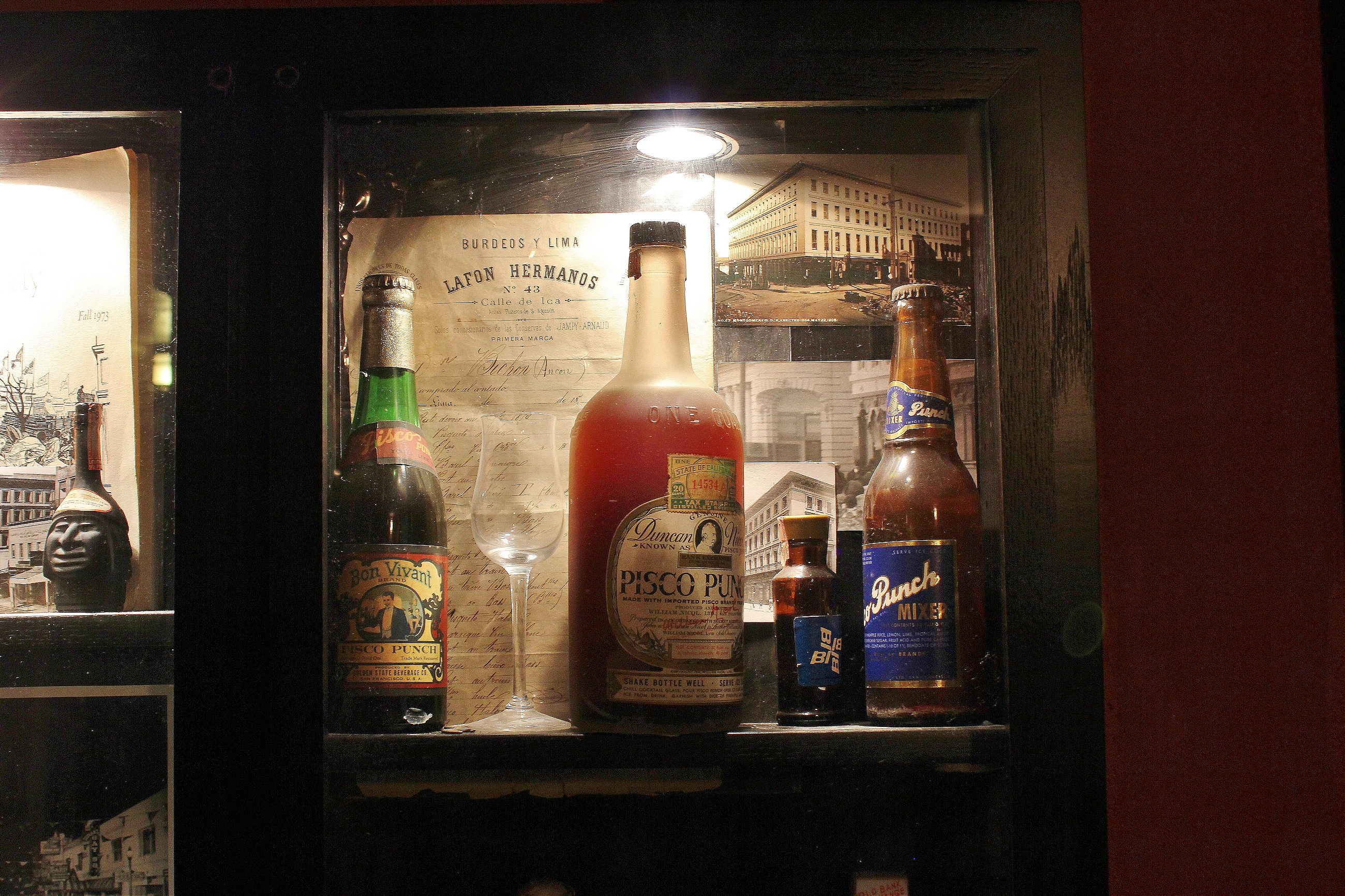
La Mar Cebichería Peruana
Peru is a culture of the Churrigueresque, where more is always best. And this tendency is evident in the Pisco Punch produced at this popular Embarcadero eatery run by Peruvian celebrity chef Gastón Acurio. The drink has all the requisite ingredients: Barsol pisco, house-made pineapple gum, and fresh lime juice. But it also includes a handful of ice, a slice of fresh orange, a chunk of fresh pineapple, and a sprinkle of shaved nutmeg. Whereas your average Pisco Punch tends to have the alcoholic punch of a martini, this one comes off more like a summery lady drink, one that will nonetheless kick you firmly in the ass. I personally could do without the nutmeg (it obscures the flavor of the pineapple), but it remains quite refreshing—and an excellent escape from the droves of tourists in Duck Dynasty T-shirts meandering the sidewalk outside.
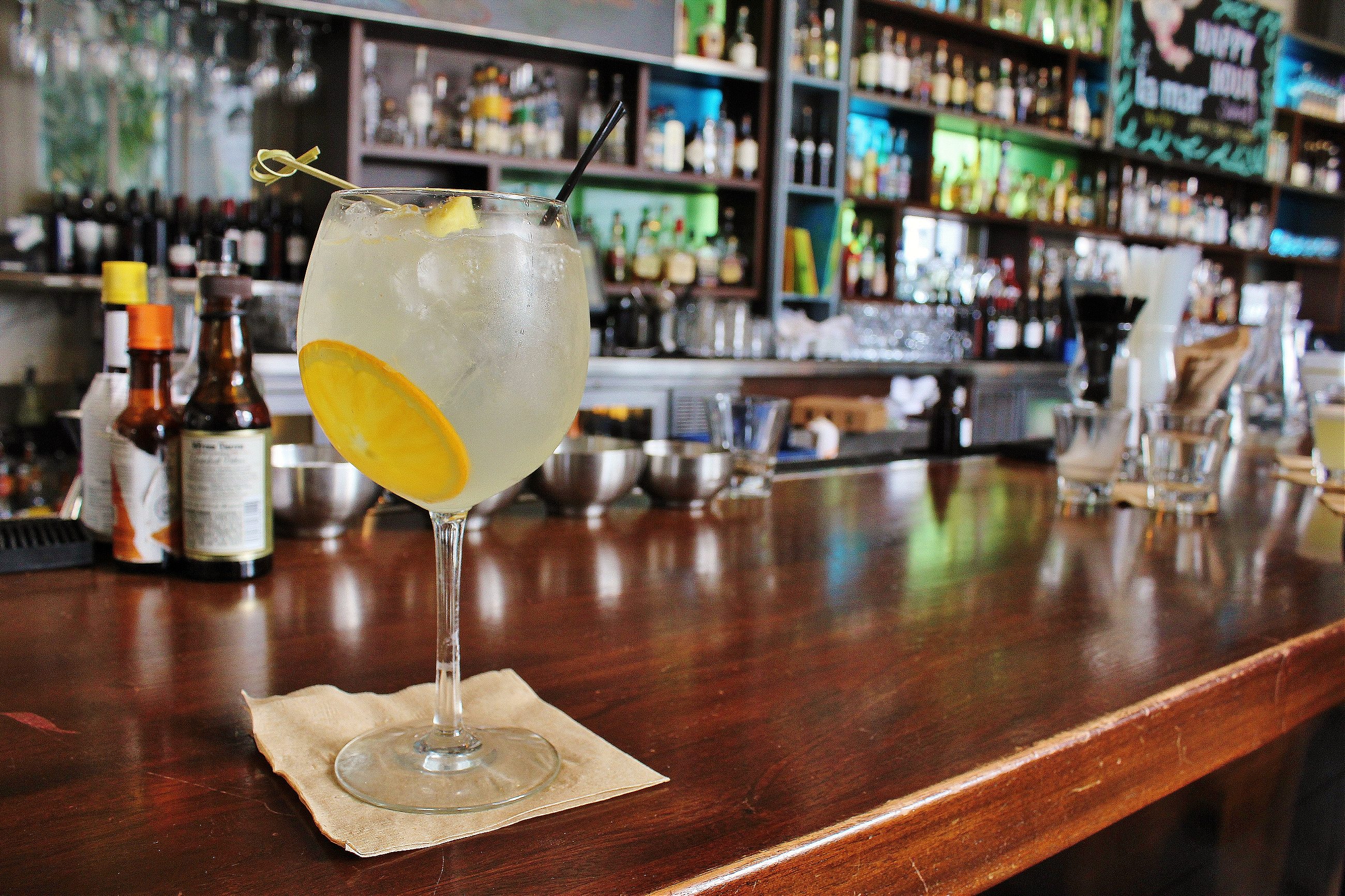
Cantina
Pisco Punch has generated its share of obsessives in the Bay Area. Among them is Duggan McDonnell, co-owner of Cantina, a jamming little cocktail bar in the vicinity of Nob Hill. McDonnell doesn’t just serve pisco, he teamed up with a distiller in Peru to import his own brand, Campo de Encanto. It’s quality booze, retailing for almost $40 a bottle, and he uses it to produce one of the city’s more unique Pisco Punches. The drink features all the standard ingredients, but it’s also infused with a good dose of Lillet Rouge, a French aperitif wine that gives Cantina’s Pisco Punch its singular red glow.
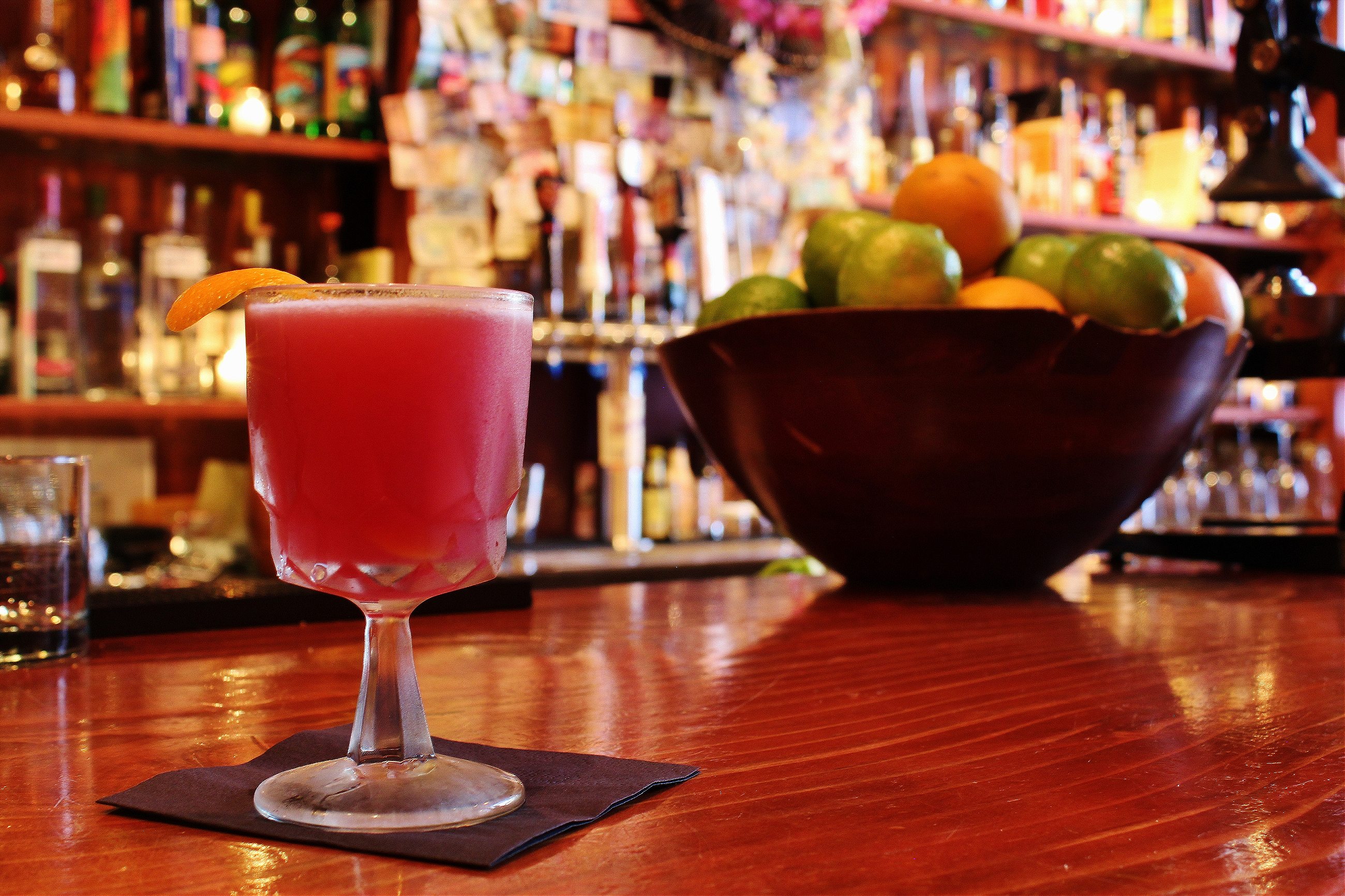
This is for a reason: Duggan says his research shows that the original Pisco Punch was reddish in color. “And the lore was that it had a stimulant in it,” he says. “Well, cocaine as we know it didn’t exist, but there was a brand of coca wine that was available in San Francisco at the time, and that was Vin Mariani, which was the most popular tipple of its day.” Vin Mariani supplied the drinker with a good dose of cocaine alkaloids, and therefore, an excellent rush. Since Mariani is no more, Duggan replaced it with the closest thing he could find: Lillet Rouge, a red Bordelais with botanical elements (in this case, non-psychoactive cinchona bark). The Lillet gives Duggan’s version of the drink a special touch. Pisco generally has little in the way of flavor, leaving the palate without much to ruminate on. But his Pisco Punch lingers lovingly on the tongue. And it will still give you a buzz, even if it’s not from cocaine.
MKT at the Four Seasons
When a single Pisco Punch won’t do, there’s the bar at the Four Seasons in the Financial District. Here, MKT’s general manager Oliver Lee has reconceived the cocktail as a punch bowl—one that serves anywhere from six to ten thirsty venture capitalists. Called “Back to the Bank Exchange,” the formula employs Campo de Encanto pisco along with the other typical ingredients. But it also includes a splash of Hum, a liqueur made with a blend of hibiscus, ginger, cardamom, and kaffir lime. This makes for a tart drink that is also herbal and aromatic. It’s also stocked with enough pisco to leave you feeling just a little bit delirious about the markets. Incidentally, if you’re not up to downing the whole bowl—which costs $65—the bartenders will happily whip up a single drink.
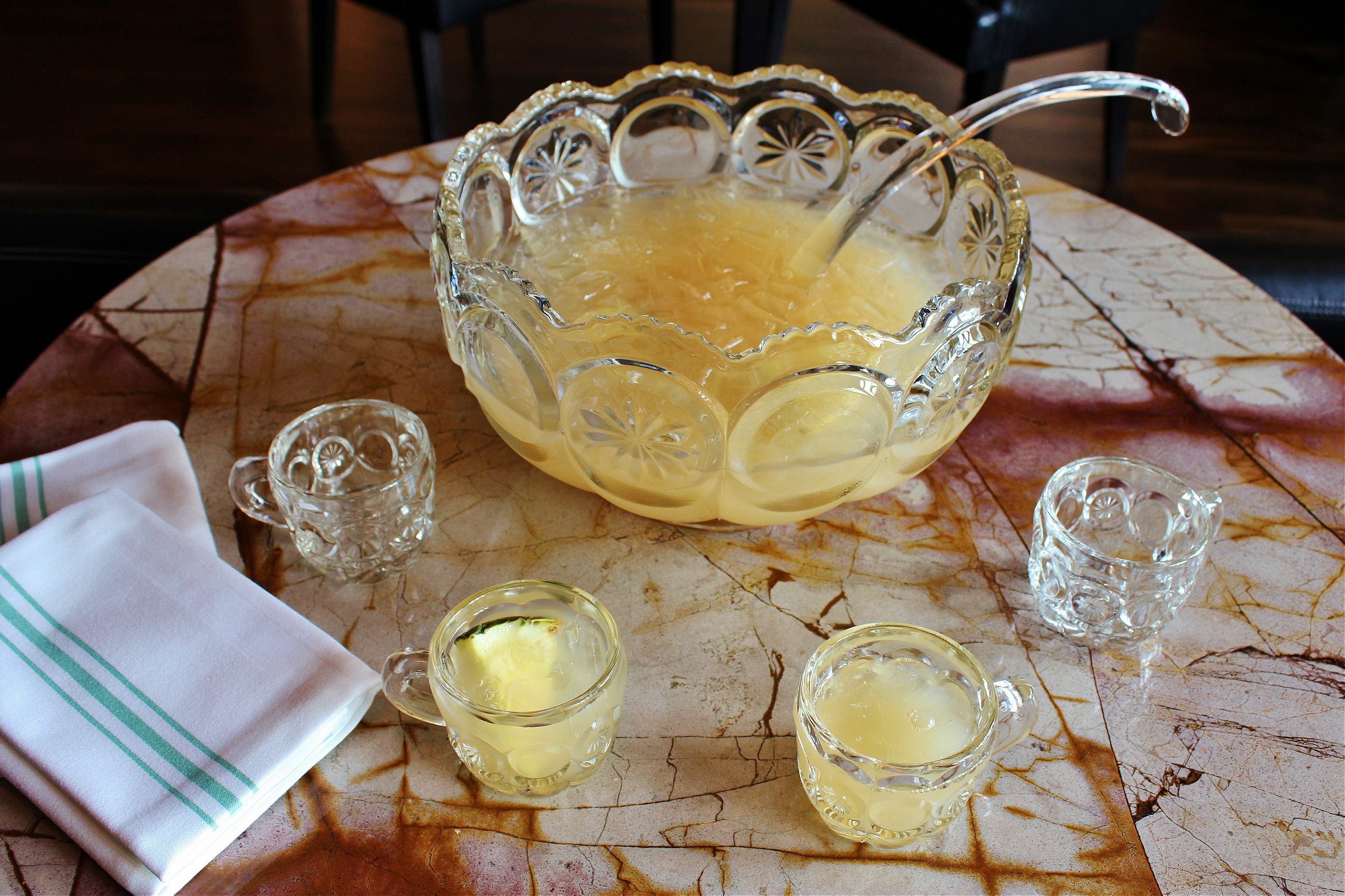
Comstock Saloon
Just a couple blocks north from the site of the original Bank Exchange (now occupied by the Transamerica Pyramid) is this cozy spot with all the requisite pre-Prohibition flourishes: jacquard wallpaper, wood bar, and servers clad in tailored vests. They serve up a Pisco Punch that feels like drinking silk. It’s a simple one—Campo de Encanto pisco with lime juice, pineapple gum, and a dash of house-made kaffir lime tincture—but it’s a monument to balance: not too sweet, not too tart, the dense notes of the pineapple mingling with the brightness of the lime.
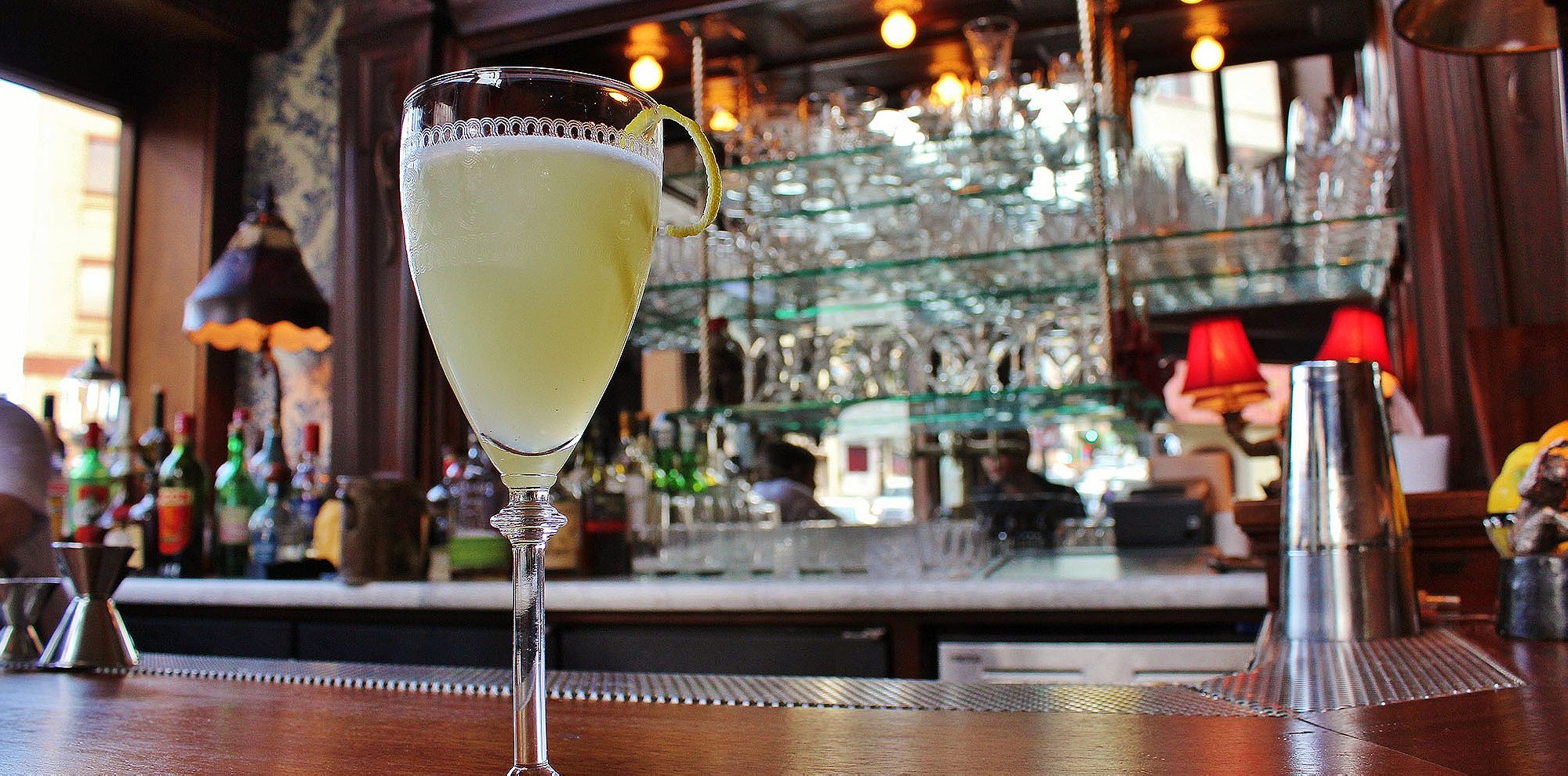
Don’t let the suppleness fool you. There’s a reason Nicol wouldn’t let his patrons at the Bank Exchange have more than two at a time. As the gaseous 20th century journalist Lucius Beebe once wrote in the pages of Gourmet magazine: “Topers who managed to countervene the two-drink regulation… lapsed into unconsciousness with the docility of sleepy kittens, wreathed in smiles and dreaming heavenly dreams.” That, or you’ll just find yourself stumbling around Montgomery Street, blind drunk like a pre-Prohibition lush.
